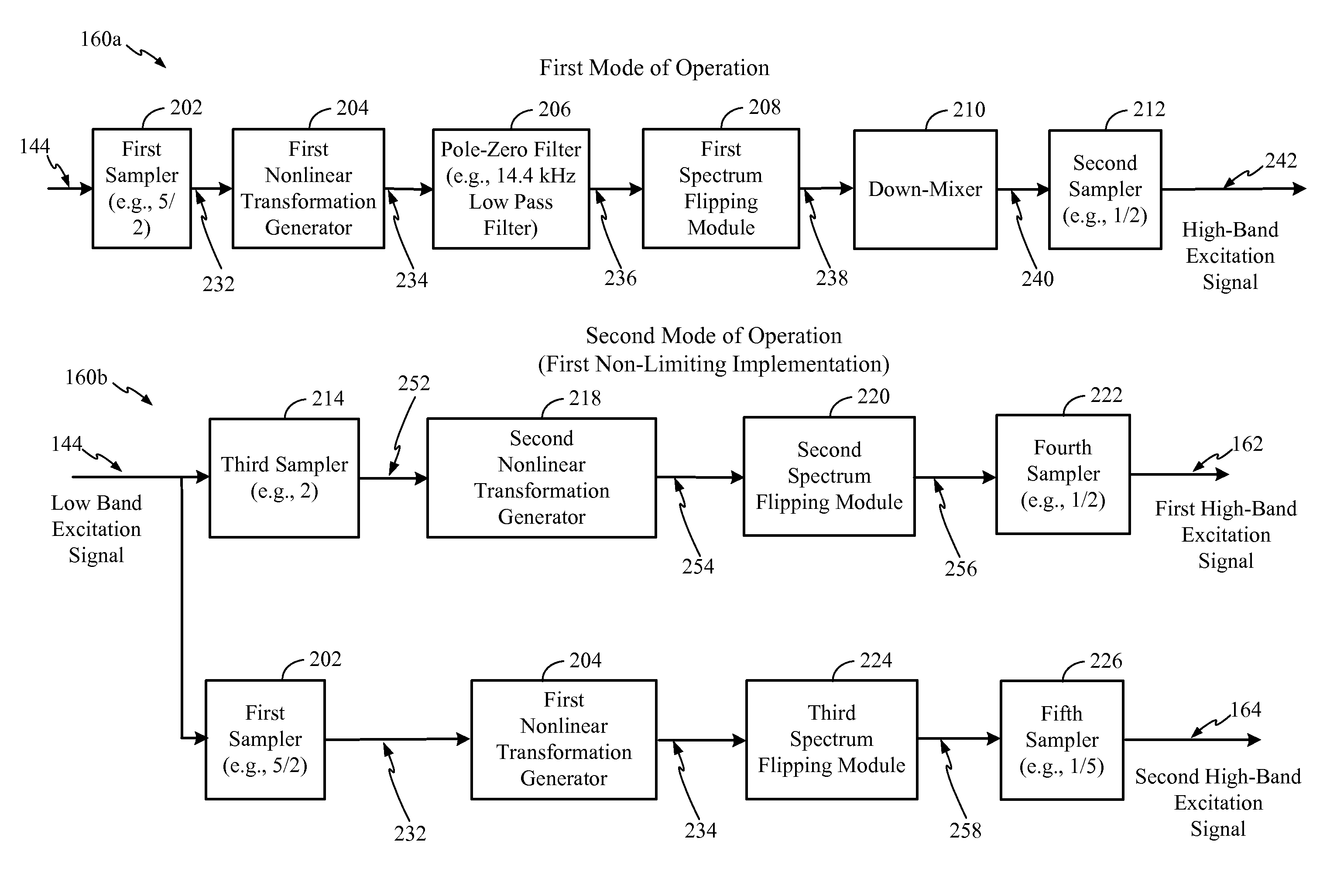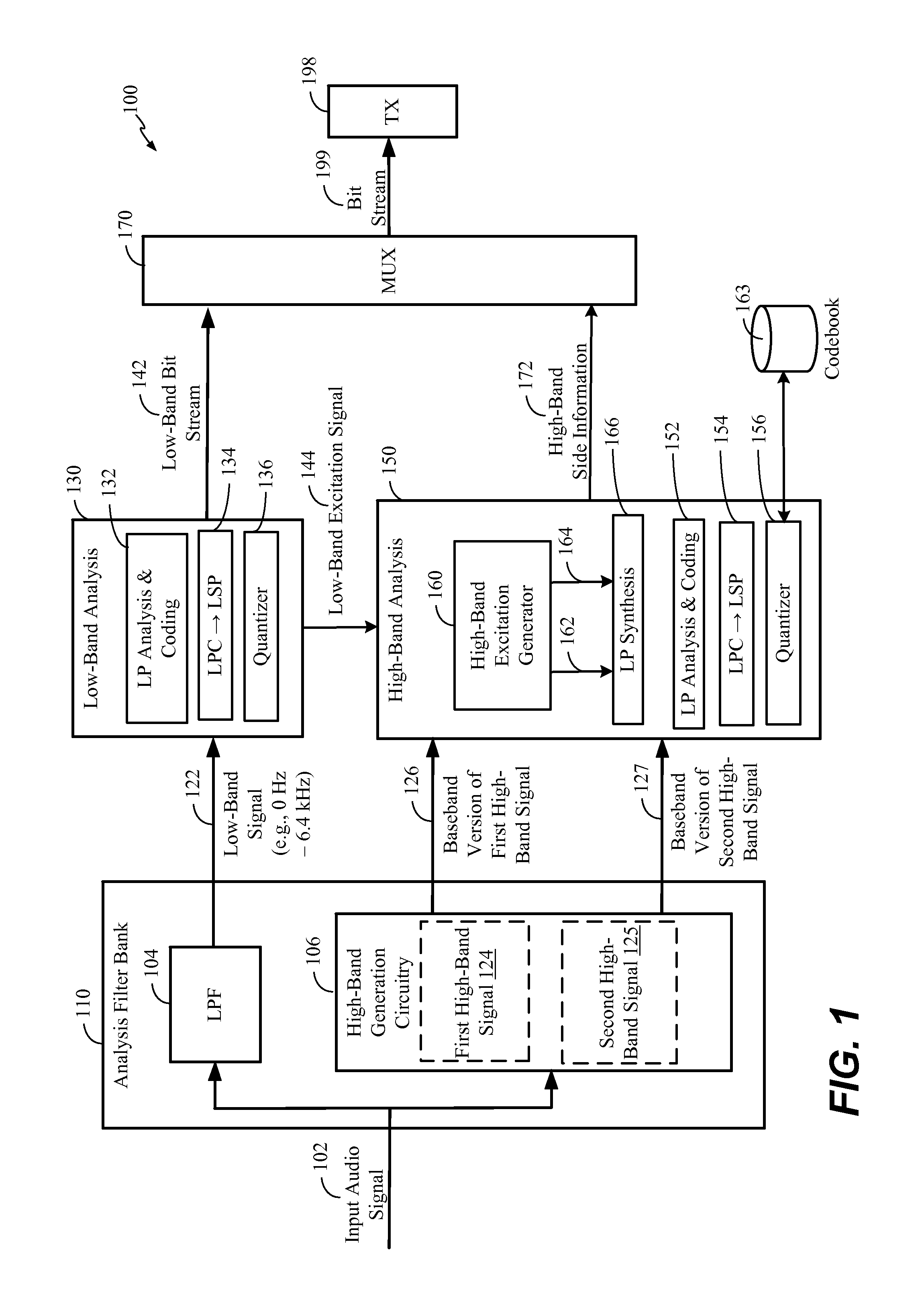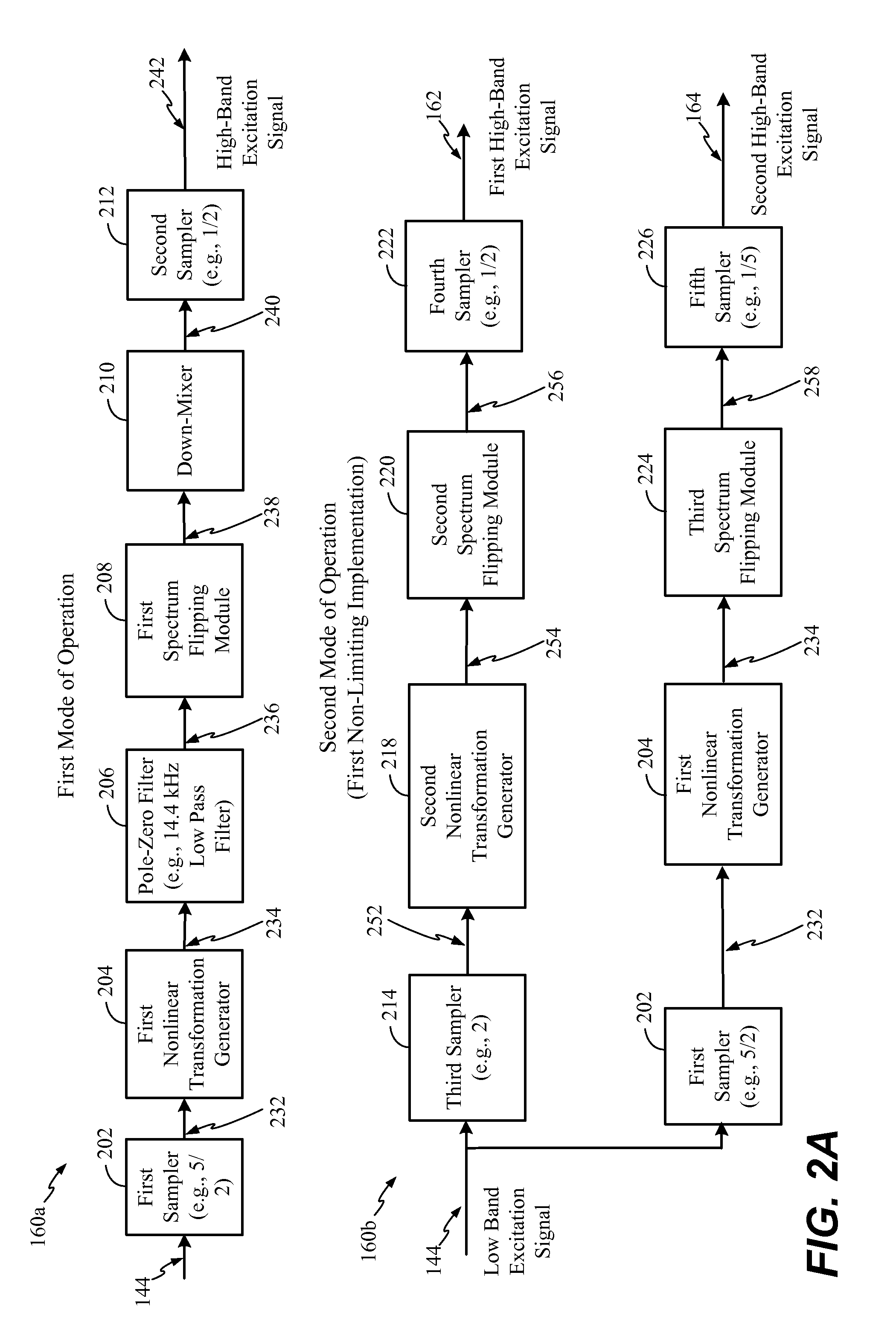High-band signal coding using multiple sub-bands
a signal coding and sub-band technology, applied in the field ofsignal processing, can solve the problems of low bit rate operation of celp coding systems operating at low bit rate, introducing perceptually significant distortion, and time-domain coders may fail to retain high quality and robust performan
- Summary
- Abstract
- Description
- Claims
- Application Information
AI Technical Summary
Benefits of technology
Problems solved by technology
Method used
Image
Examples
Embodiment Construction
[0058]Referring to FIG. 1, a particular aspect of a system that is operable to generate multiple-band harmonically extended signals is shown and generally designated 100. In a particular aspect, the system 100 may be integrated into an encoding system or apparatus (e.g., in a coder / decoder (CODEC) of a wireless telephone). In other aspects, the system 100 may be integrated into a set top box, a music player, a video player, an entertainment unit, a navigation device, a communications device, a PDA, a fixed location data unit, or a computer, as illustrative non-limiting examples. In a particular aspect, the system 100 may correspond to, or be included in, a vocoder.
[0059]It should be noted that in the following description, various functions performed by the system 100 of FIG. 1 are described as being performed by certain components or modules. However, this division of components and modules is for illustration only. In an alternate aspect, a function performed by a particular compo...
PUM
 Login to View More
Login to View More Abstract
Description
Claims
Application Information
 Login to View More
Login to View More - R&D
- Intellectual Property
- Life Sciences
- Materials
- Tech Scout
- Unparalleled Data Quality
- Higher Quality Content
- 60% Fewer Hallucinations
Browse by: Latest US Patents, China's latest patents, Technical Efficacy Thesaurus, Application Domain, Technology Topic, Popular Technical Reports.
© 2025 PatSnap. All rights reserved.Legal|Privacy policy|Modern Slavery Act Transparency Statement|Sitemap|About US| Contact US: help@patsnap.com



